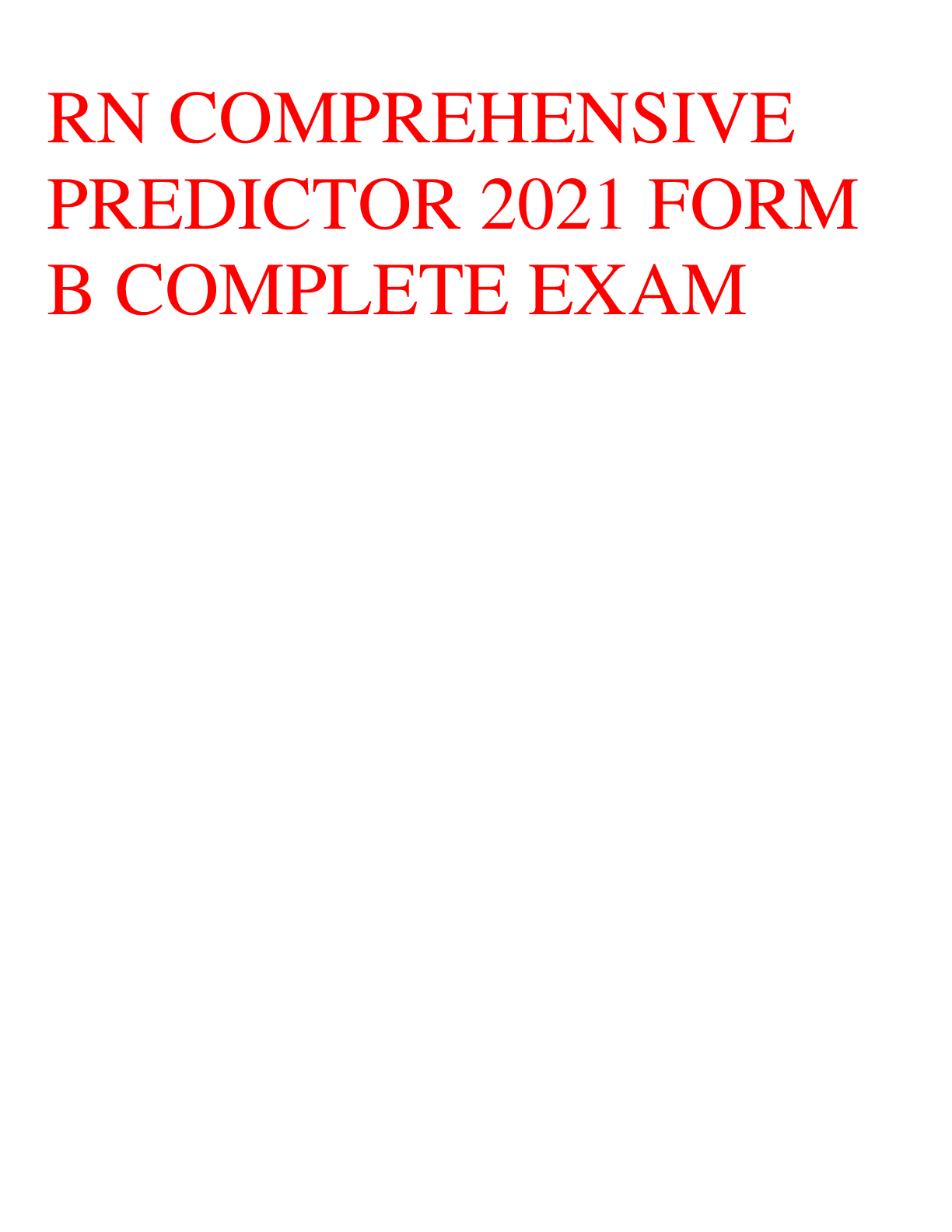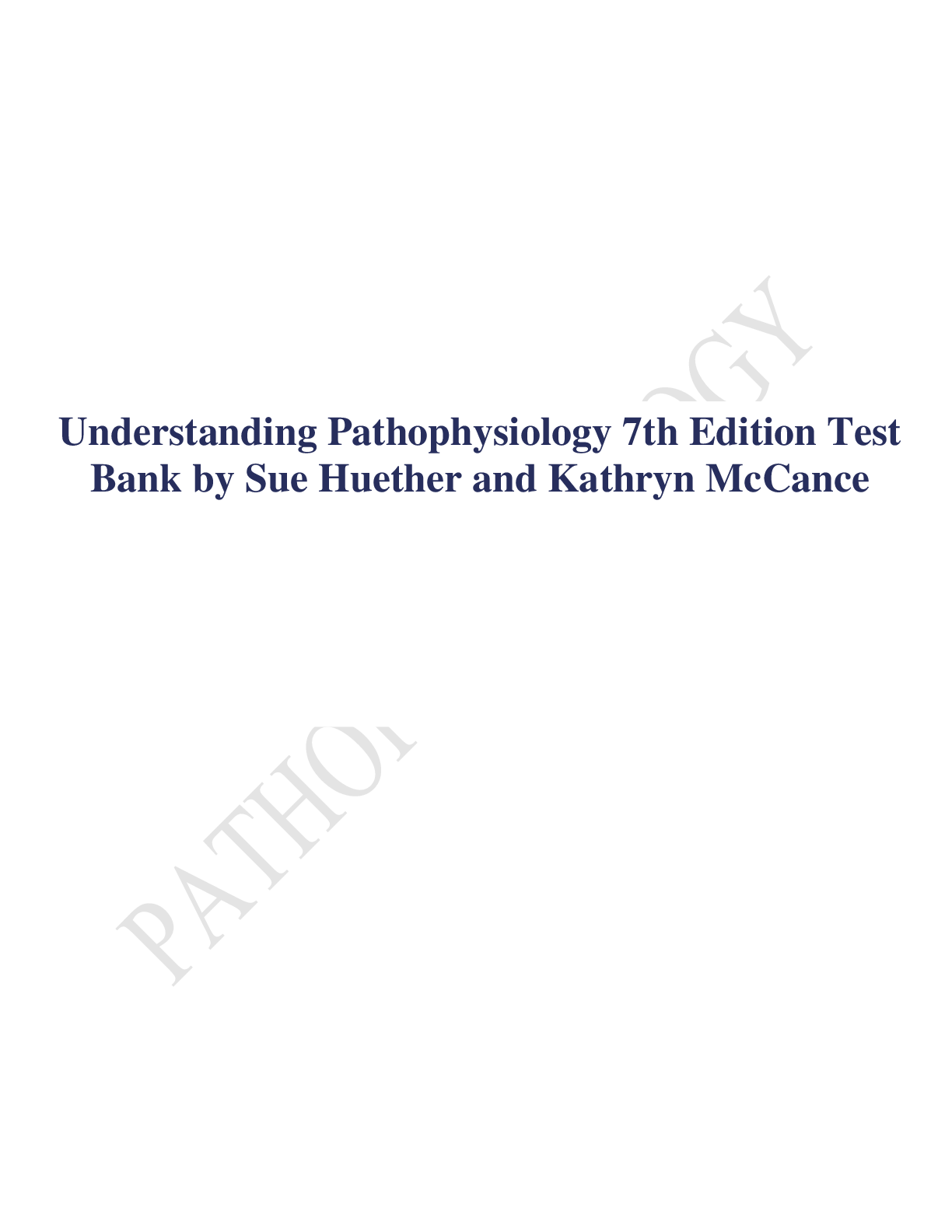Physiology > TEST BANK > Essentials Of Human Anatomy & Physiology -11th Edition by Elaine N. Marieb - Test Bank (All)
Essentials Of Human Anatomy & Physiology -11th Edition by Elaine N. Marieb - Test Bank
Document Content and Description Below
Essentials of Human Anatomy and Physiology, 11e, (Marieb) Chapter 5 The Skeletal System 5.1 Multiple Choice Part I Questions Using Figure 5.1, identify the following: 1) The proximal epiphysis is ... represented by . 1. A) Label H 2. B) Label C 3. C) Label A 4. D) Label B 5. E) Label F Answer: D Page Ref: 162 Bloom’s: 1) Knowledge 2) The area that causes the lengthwise growth of a long bone is indicated by . 1. A) Label F 2. B) Label D 3. C) Label A 4. D) Label E 5. E) Label C Answer: D Page Ref: 161, 162 Bloom’s: 2) Comprehension 3) The area that serves as a storage area for fat in adults is indicated by . 1. A) Label H 2. B) Label F 3. C) Label A 4. D) Label G 5. E) Label B Answer: A Page Ref: 161, 162 Bloom’s: 2) Comprehension 4) The diaphysis is indicated by . 1. A) Label D 2. B) Label C 3. C) Label G 4. D) Label A 5. E) Label H Answer: B Page Ref: 161, 162 Bloom’s: 1) Knowledge 5) The periosteum, a connective tissue covering on the diaphysis, is represented by . 1. A) Label C 2. B) Label A 3. C) Label G 4. D) Label B 5. E) Label F Answer: E Page Ref: 161, 162 Bloom’s: 2) Comprehension 6) The area that contains glassy hyaline cartilage that provides a smooth slippery surface which decreases friction is indicated by . 1. A) Label D 2. B) Label H 3. C) Label E 4. D) Label B 5. E) Label A Answer: A Page Ref: 161, 162 Bloom’s: 2) Comprehension 7) Blood cell formation is called . 1. A) ossification 2. B) hematopoiesis 3. C) homeostasis 4. D) metabolism Answer: B Page Ref: 159 Bloom’s: 1) Knowledge 8) What bones protect the spinal cord? 1. A) ribs 2. B) sternum 3. C) vertebrae 4. D) coxal bones Answer: C Page Ref: 159 Bloom’s: 1) Knowledge 9) Cube-shaped bones that contain mostly spongy bone are called bones. 1. A) flat 2. B) long 3. C) short 4. D) irregular Answer: C Page Ref: 160 Bloom’s: 1) Knowledge 10) Small canals that connect osteocytes in their lacunae to the central canal are known as . 1. A) canaliculi 2. B) perforating (Volkmann’s) canals 3. C) central (Haversian) canals 4. D) perforating (Sharpey’s) fibers Answer: A Page Ref: 161 Bloom’s: 1) Knowledge 11) The process of bone formation is known as . 1. A) hematopoiesis 2. B) hemostasis 3. C)metabolism 4. D) ossification Answer: D Page Ref: 165 Bloom’s: 1) Knowledge 12) Bone-destroying cells known as osteoclasts are activated by the hormone . 1. A) calcitonin 2. B) parathyroid hormone (PTH) 3. C) insulin 4. D) growth hormone Answer: B Page Ref: 166 Bloom’s: 2) Comprehension 13) The first step in bone healing involves the formation of a blood-filled swelling known as a(n) . 1. A) epiphyseal line 2. B) bony callus 3. C) hematoma 4. D) fibrocartilage callus Answer: C Page Ref: 169 Bloom’s: 1) Knowledge 14) An incomplete bone break, known as a(n) fracture, is commonly seen in children. 1. A) spiral 2. B) greenstick 3. C) impacted 4. D) comminuted Answer: B Page Ref: 168 Bloom’s: 2) Comprehension 15) The skull, vertebral column, and thoracic cage form the skeleton. 1. A) appendicular 2. B) central 3. C) axial 4. D) main Answer: C Page Ref: 170 Bloom’s: 1) Knowledge 16) The large hole located in the base of the occipital bone that allows the spinal cord and brain to connect is the . 1. A) occipital condyle 2. B) vertebral foramen 3. C) intervertebral foramen 4. D) foramen magnum Answer: D Page Ref: 172 Bloom’s: 1) Knowledge 17) The temporal bones are joined with the parietal bones at the sutures. 1. A) coronal 2. B) sagittal 3. C) squamous 4. D) lambdoid Answer: C Page Ref: 171 Bloom’s: 2) Comprehension 18) The shin bone is called the . 1. A) tibia 2. B) fibula 3. C) femur 4. D) radius Answer: A Page Ref: 189 Bloom’s: 1) Knowledge 19) The head of the humerus fits into the of the scapula. 1. A) acromion process 2. B) glenoid cavity 3. C) suprascapula notch 4. D) coracoid process Answer: B Page Ref: 182 Bloom’s: 2) Comprehension 20) Two or more bones meet at a location called a(n) . 1. A) fracture 2. B) hematoma 3. C) articulation (joint) 4. D) marrow cavity Answer: C Page Ref: 190 Bloom’s: 1) Knowledge 21) Immovable joints are functionally classified as . 1. A) diarthroses 2. B) synarthroses 3. C) amphiarthroses 4. D) symphyses Answer: B Page Ref: 190 Bloom’s: 1) Knowledge Using Figure 5.2, identify the following: 22) The parietal bone is indicated by . 1. A) Label M 2. B) Label O 3. C) Label A 4. D) Label H 5. E) Label P Answer: C Page Ref: 171 Bloom’s: 1) Knowledge 23) The fibula is indicated by . 1. A) Label Q 2. B) Label X 3. C) Label R 4. D) Label T 5. E) Label W Answer: B Page Ref: 188, 189 Bloom’s: 1) Knowledge 24) The patella is indicated by . 1. A) Label E 2. B) Label G 3. C) Label I 4. D) Label U 5. E) Label A Answer: C Page Ref: 189 Bloom’s: 1) Knowledge 25) The manubrium and xiphoid process are markings on the bone indicated by . 1. A) Label O 2. B) Label N 3. C) Label A 4. D) Label K 5. E) Label B Answer: A Page Ref: 181 Bloom’s: 2) Comprehension 26) The radius bone is indicated by . 1. A) Label T 2. B) Label R 3. C) Label F 4. D) Label S 5. E) Label Q Answer: E Page Ref: 184, 185 Bloom’s: 1) Knowledge 27) The mandible is indicated by . 1. A) Label N 2. B) Label W 3. C) Label M 4. D) Label C 5. E) Label B Answer: A Page Ref: 174, 175 Bloom’s: 1) Knowledge 28) The carpals are indicated by . 1. A) Label N 2. B) Label X 3. C) Label J 4. D) Label I 5. E) Label T Answer: E Page Ref: 185 Bloom’s: 1) Knowledge 29) The greater tubercle and trochlea are bone markings situated on the bone marked by . 1. A) Label O 2. B) Label I 3. C) Label E 4. D) Label Y 5. E) Label A Answer: C Page Ref: 184 Bloom’s: 2) Comprehension 30) The ilium, pubis, and ischium fuse to form the bone marked by . 1. A) Label F 2. B) Label G 3. C) Label T 4. D) Label H 5. E) Label I Answer: B Page Ref: 186 Bloom’s: 2) Comprehension 5.2 Multiple Choice Part II Questions 1) The most important minerals stored in bones are . 1. A) calcium and iron 2. B) sodium and phosphorus 3. C) sodium and potassium 4. D) calcium and phosphorus 5. E) calcium and potassium Answer: D Page Ref: 159 Bloom’s: 1) Knowledge 2) The arrangement of bone tissue shown in Figure 5.3 consists of . 1. A) osteons(Haversian systems) 2. B) yellow marrow 3. C) trabeculae 4. D) neurons 5. E) red marrow Answer: A Page Ref: 161 Bloom’s: 2) Comprehension 3) Where does hematopoiesis occur? 1. A) marrow cavity 2. B) epiphyseal plate 3. C) articular cartilage 4. D) periosteum 5. E) endosteum Answer: A Page Ref: 159 Bloom’s: 2) Comprehension 4) The femur, tibia, humerus, and radius are all classified as . 1. A) compact bones 2. B) irregular bones 3. C) flat bones 4. D) long bones 5. E) sesamoid bones Answer: D Page Ref: 160 Bloom’s: 2) Comprehension 5) What type of tissue covers the epiphysis of bones and reduces friction in the joints? 1. A) yellow marrow 2. B) endosteum 3. C) spongy bone 4. D) periosteum 5. E) articular cartilage Answer: E Page Ref: 161 Bloom’s: 1) Knowledge 6) In adults, the function of the yellow marrow is to . 1. A) store adipose tissue 2. B) form blood cells 3. C) store calcium and phosphorus 4. D) promote lengthwise growth in long bones 5. E) decrease friction at joint surfaces Answer: A Page Ref: 161 Bloom’s: 2) Comprehension [Show More]
Last updated: 1 year ago
Preview 1 out of 107 pages
Instant download

Buy this document to get the full access instantly
Instant Download Access after purchase
Add to cartInstant download
Reviews( 0 )
Document information
Connected school, study & course
About the document
Uploaded On
Sep 10, 2021
Number of pages
107
Written in
Additional information
This document has been written for:
Uploaded
Sep 10, 2021
Downloads
0
Views
44


.png)
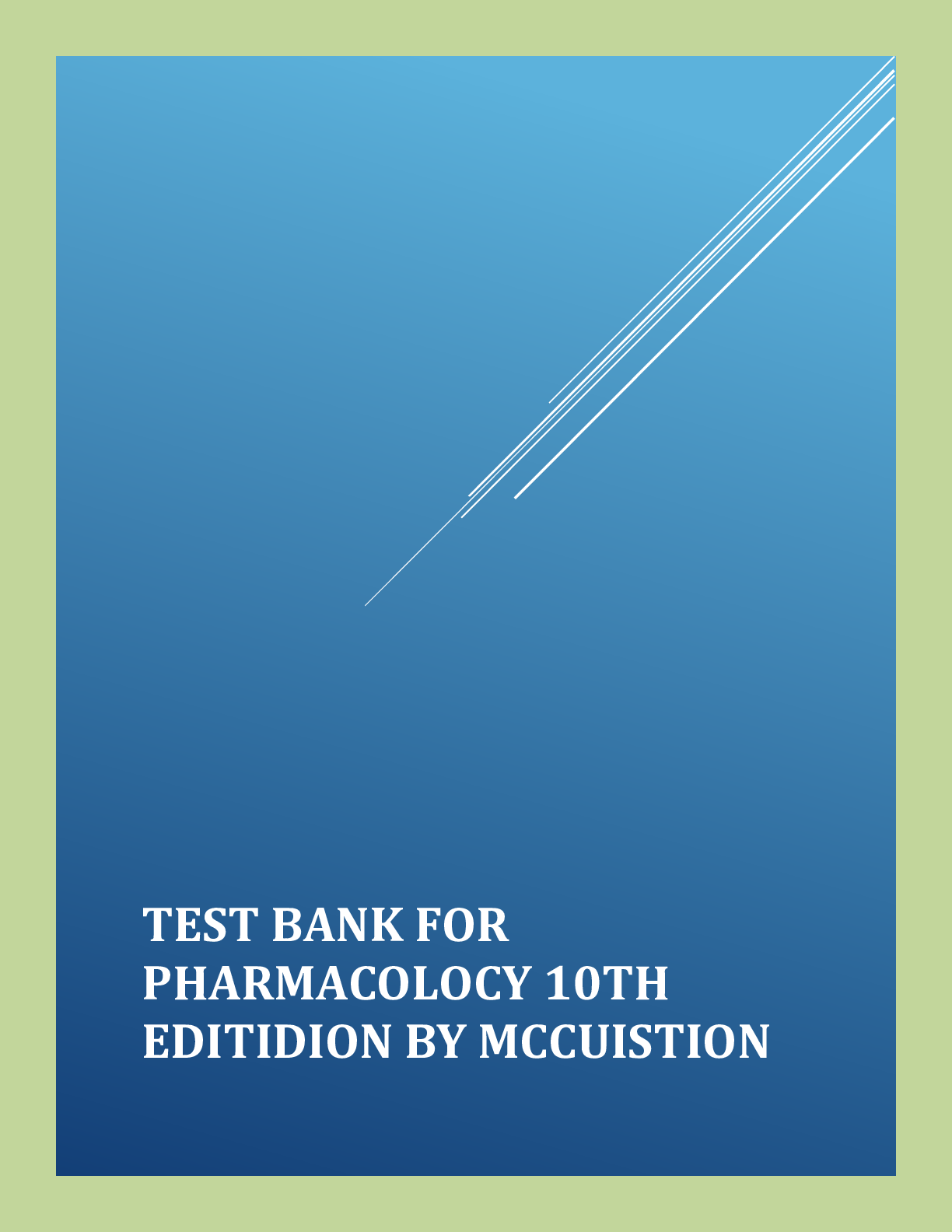

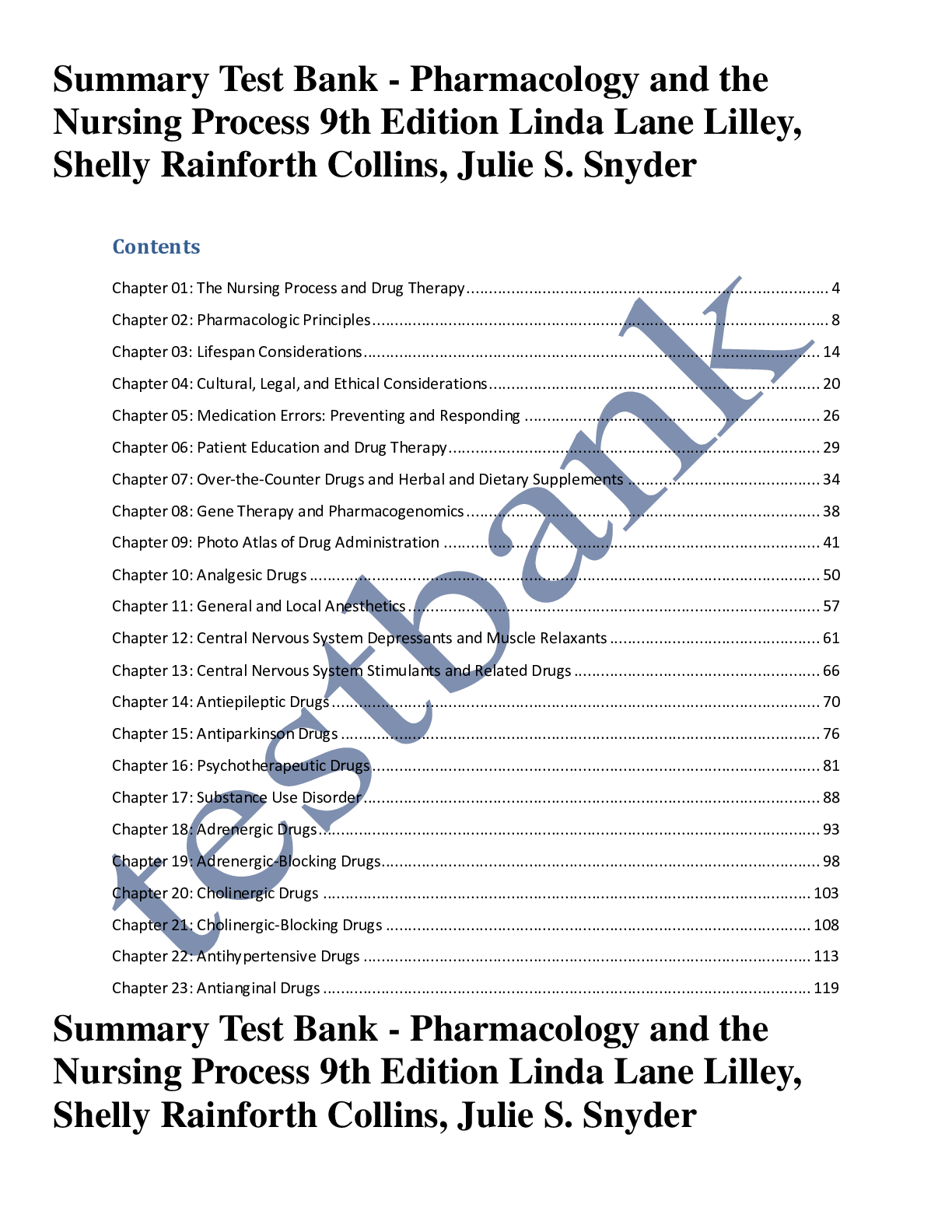
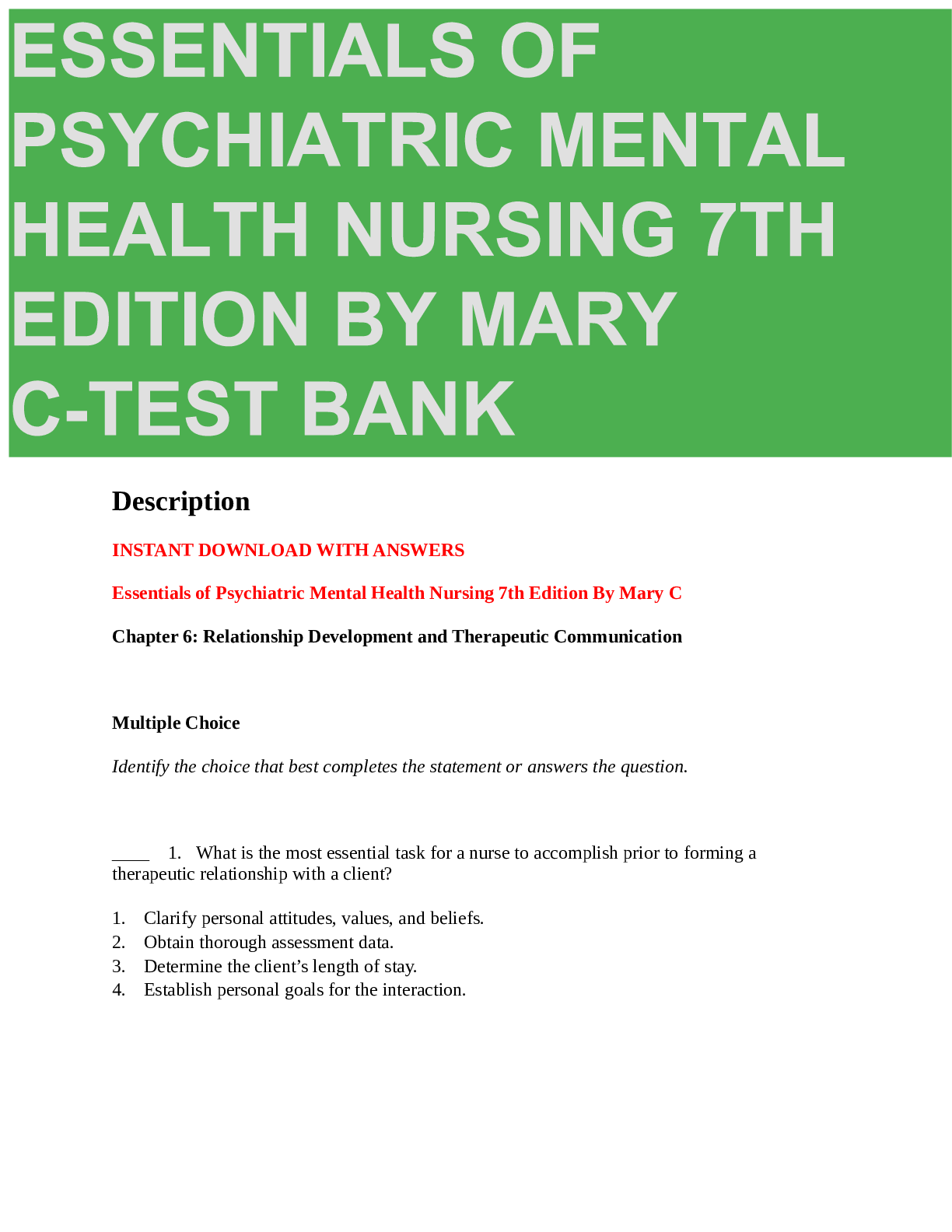

_repaired (1).png)
